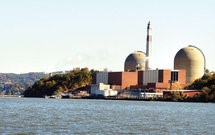 Comprehensive nuclear disarmament, while being a cherished goal, is still a distant dream. Speaking at an international seminar organised recently by the Institute of Defence Studies and Analyses and the Indian Pugwash Society, stated that nuclear weapons, “though lesser in number, still exist." He added that the threat of a global nuclear war might have " diminished” but the “threats pertaining to nuclear terrorism have assumed a greater profile."
Comprehensive nuclear disarmament, while being a cherished goal, is still a distant dream. Speaking at an international seminar organised recently by the Institute of Defence Studies and Analyses and the Indian Pugwash Society, stated that nuclear weapons, “though lesser in number, still exist." He added that the threat of a global nuclear war might have " diminished” but the “threats pertaining to nuclear terrorism have assumed a greater profile."
The world continues to be faced with serious threats pertaining to chemical and biological weapons. These are all “poor men’s bombs” that do not require aircraft, drones, rocket launchers, cruise or ballistic missiles to cause massive damage. Much of such weapons’ technology, material and equipment have legitimate uses in medical, agricultural and industrial plants. They are easily accessible and difficult to detect. Taking advantage of this in 1995, Japan’s Aum Shinrikyo religious sect launched Sarin attack on Tokyo subway. In 2001, there were anthrax cases in the United States. Some irrational elements could repeat using such weapons of mass destruction in future as well.
The major nuclear weapon powers still lack commitment to disarmament. The current Nuclear Non-Proliferation Treaty is tolerant to the on-going refined nuclear armament of the powerful Nuclear Five. It is well documented that the nuclear five also aid the nuclear weaponisation programme of other nations. For instance, China has aided Pakistan and Washington provided uranium enriched to 93 per cent and helped start Iran’s nuclear programme in 1967.More or less similar has been the approach of the major nations in possession of chemical and biological nations.
The 1925 Geneva Protocol bans the use of mustard gas and Sarin gas. But during the Vietnam War, American military forces used Agent Orange, a powerful mixture of chemical defoliants, to eliminate forest cover for North Vietnamese and Viet Cong troops, as well as destroy crops that might be used to feed them. This caused serious health issues, including tumours, birth defects, rashes, psychological symptoms and cancer, among returning American servicemen and their families as well as among the Vietnamese population.
The Organisation for the Prohibition of Chemical Weapons is not being an effective custodian of the Chemical Weapons Convention. The U.S., Russia, China, Iran, North Korea, Syria have not yet destroyed their chemical weapons. Notwithstanding its high moral discourse on the international for a, the United States has hardly been ever serious about its violations by other states. Recently, declassified American documents confirm how the Reagan administration, Pentagon and CIA officials overlooked Iraqi dictator Saddam Hussein’s chemical weapons programme.
Accordingly, the Americans knew that in April 1984, Baghdad used aerial bombs and artillery shells filled with sarin against Iranian troops on the Fao Peninsula. In March 1988, Baghdad launched a nerve gas attack on the Kurdish village of Halabja in northern Iraq, but the Reagan administration looked the other way. In 1988, the United States learned through its satellite imagery that Iran was about to exploit a hole in Iraqi defenses. American intelligence officials conveyed all information about the location of the Iranian troops to Iraq. Hussein's military used this information to attack them with chemical weapons.
Washington’s approach towards the chemical disarmament of Syria today is not different. In the present Syrian scenario, the rebels might have used the chemical weapons too. But the White House has been blaming the current Assad regime alone. China, Egypt, Cuba, Iran, Israel, North Korea, Russia, Syrian and Taiwan still have biological weapons. Syria does not look serious about disarmament.
OPCW’s efforts to dismantle Syria’s chemical weapons capability are said to be running months behind schedule. It is far from clear if the 1,300 tons of chemical warfare agents and precursor chemicals declared by Assad when he signed the Chemical Weapons Convention represent the full amount he possesses. Also, Syria’s equally dangerous biological weapon stocks still remain. The current discussion of Syria’s chemical weapons arsenal does not include, by definition, the country’s biological weapons complex.
Given the realities on the ground, it is very much justified that New Delhi has come to evolve a realistic strategy in defence of its own interests. While adhering to its traditional policy of comprehensive disarmament, India demonstrated its nuclear capability as early as in 1974. New Delhi maintained, in the words of Prime Minister Singh, “nearly a quarter century of restraint before a harsh security environment and events, both global and closer home, obliged us to test in 1998 and declare ourselves a nuclear weapon state.” New Delhi’s nuclear doctrine today lays emphasis on a credible minimum deterrent and a no-first-use policy allowing it to "retain the option of retaliating with nuclear weapons" in the event of use of weapons of mass destruction against India or Indian forces anywhere.
New Delhi has had a realistic approach also about meeting any possible chemical and biological threats. While India is a signatory to the Biological and Toxin Weapons Convention (1974) and the Chemical Weapons Convention (1997), it has accorded a high priority to the development of nuclear biological and chemical (NBC) defence systems.
Knowledgeable sources say that over the years the Defence Research and Development Organisation has mastered a wide range of technologies and equipment, including detectors and reconnaissance vehicles, nanotechnology based sensors and micro UAVs, for defence against CBRN threats. DRDO-developed CBRN equipment include individual protective equipment such as auto-injections, food, water, air decontamination tools, shelters, decontamination equipment and medical management products. Most of these products can be useful also for the internal security forces.
By Special Arrangement with The Centre For Land Warfare Studies (CLAWS) (http://www.claws.in)